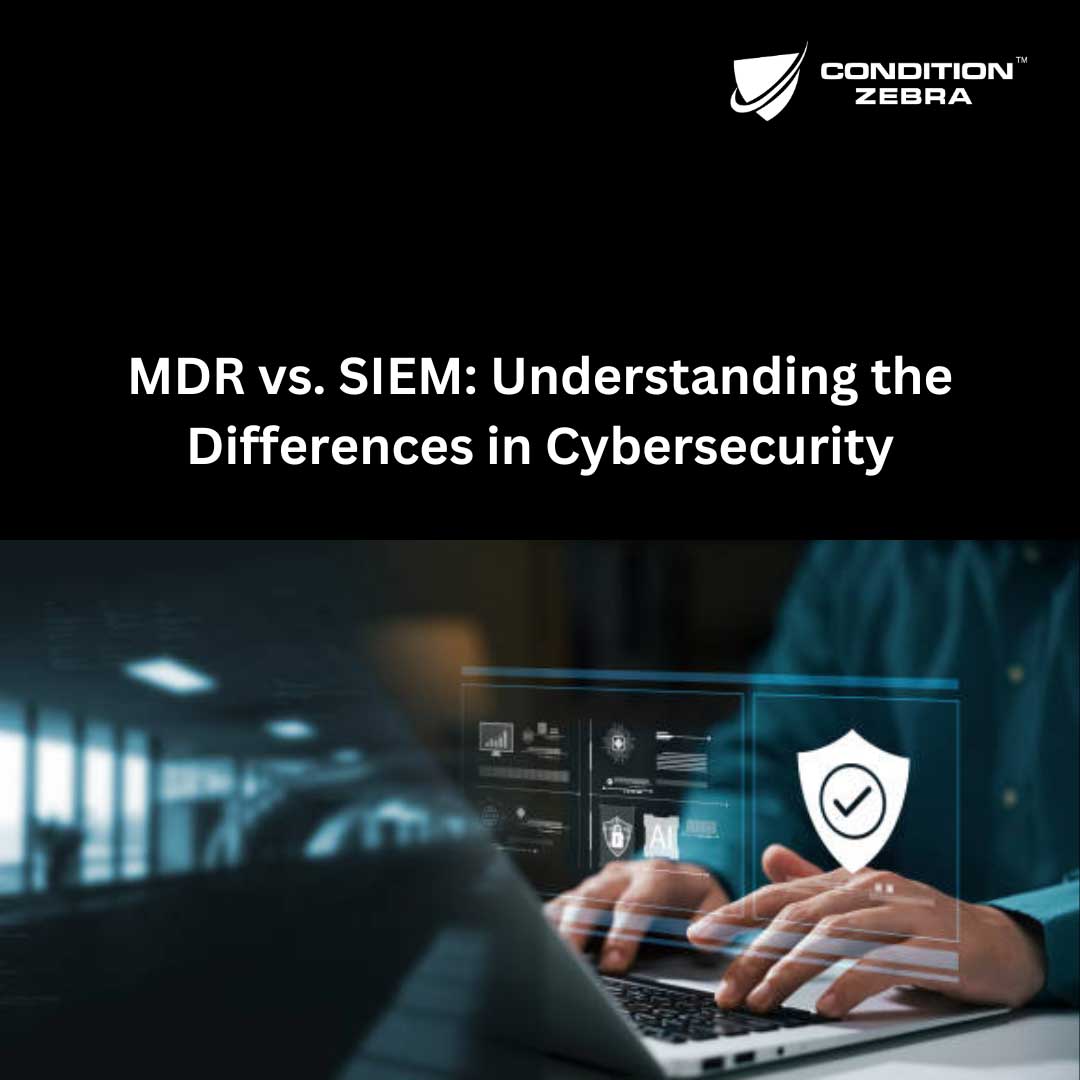In the ever-evolving landscape of cybersecurity, organisations are continuously seeking effective ways to protect their digital assets. Two prominent solutions that often come up in these discussions are Managed Detection and Response (MDR) and Security Information and Event Management (SIEM). Both play crucial roles in cybersecurity strategies, but they serve different purposes and offer distinct advantages. This article aims to elucidate the differences between MDR and SIEM, helping organisations make informed decisions about which solution best suits their needs.
What is SIEM?
Security Information and Event Management (SIEM) is a solution that provides real-time analysis of security alerts generated by applications and network hardware. SIEM systems collect, correlate, and analyse data from various sources within an IT infrastructure, including firewalls, intrusion detection systems (IDS), intrusion prevention systems (IPS), and antivirus software. The primary goals of SIEM are to:
1) Centralise Log Management: SIEMs aggregate logs and events from different systems into a single platform, making it easier to manage and analyse security data.
2) Correlate Events: By correlating data from multiple sources, SIEM can identify patterns that may indicate a security threat.
3) Incident Detection and Response: SIEM provides alerts on potential security incidents, enabling security teams to respond quickly.
4) Compliance Reporting: SIEM helps organisations meet regulatory compliance requirements by generating reports that demonstrate adherence to security policies and regulations.
While SIEM is powerful in aggregating and analysing data, it requires significant resources and expertise to configure, manage, and interpret the vast amounts of data it collects. This can be a challenge for organisations without a dedicated cybersecurity team.
What is MDR?
Managed Detection and Response (MDR) is a comprehensive cybersecurity service that combines advanced threat detection, incident response, and continuous monitoring. Unlike SIEM, which is primarily a tool, MDR is a managed service that includes a team of cybersecurity experts who operate the technology on behalf of the organization. Key features of MDR include:
1) Proactive Threat Hunting: MDR providers actively seek out threats within an organisation’s environment, going beyond automated alerts to identify sophisticated attacks.
2) 24/7 Monitoring: Continuous monitoring ensures that threats are detected and addressed promptly, regardless of the time of day.
3) Expert Incident Response: MDR teams not only detect threats but also respond to incidents, mitigating damage and preventing further spread.
4) Advanced Analytics and Intelligence: MDR services leverage advanced analytics, machine learning, and threat intelligence to stay ahead of emerging threats.
MDR is particularly beneficial for organisations that lack the in-house expertise or resources to effectively manage and respond to cybersecurity threats. By outsourcing these functions to a specialised provider, organisations can enhance their security posture without the need for extensive internal investments.
Key Differences Between MDR and SIEM
1) Scope and Functionality:
SIEM: Primarily focuses on collecting, correlating, and analysing security data to generate alerts.
MDR: Encompasses a broader range of services, including threat hunting, continuous monitoring, and incident response.
2) Resource Requirements:
SIEM: Requires significant internal resources and expertise to manage and interpret data effectively.
MDR: Managed by external experts, reducing the need for extensive internal cybersecurity resources.
3) Response Capability:
SIEM: Alerts organisations to potential threats but typically requires internal teams to investigate and respond.
MDR: Includes incident response services, with experts handling the investigation and mitigation of threats.
4) Cost and Complexity:
SIEM: Can be cost-effective for organisations with the necessary in-house capabilities, but the total cost of ownership can be high due to the need for skilled personnel.
MDR: May have higher upfront costs as a managed service, but can be more cost-effective overall for organisations without existing cybersecurity infrastructure.
Conclusion
Both SIEM and MDR are critical components of a robust cybersecurity strategy, but they serve different needs. SIEM provides powerful tools for organisations with the resources and expertise to manage their own security operations. In contrast, MDR offers a comprehensive, outsourced solution for threat detection and response, ideal for organisations that prefer to leverage external cybersecurity expertise.
Ultimately, the choice between MDR and SIEM depends on an organisation’s specific needs, resources, and risk tolerance. By understanding the strengths and limitations of each approach, organisations can make informed decisions to protect their digital assets effectively.
Condition Zebra provides Cybersecurity Solutions and Cybersecurity Training for public and private SMEs in various industries, Financial Services (Banks and insurance), Government Ministries and agencies, and Government-linked companies.
Our mission is to utilize a unique strategy of combining key technologies with expertise in Information Security and Risk Management to fully prepare clients to prevent and deal with cybersecurity incidents.
Our Managed Security Services is a comprehensive cybersecurity service that utilises the real-time threat detection and response capabilities of an MDR, EDR or XDR to detect, investigate, and respond to cyber threats.
- Managed Detection and Response (MDR)
- Endpoint Detection and Response (EDR)
- Extended Detection and Response (XDR)
Source:
OpenAI. (2024). ChatGPT https://chat.openai.com/chat
Share this:

